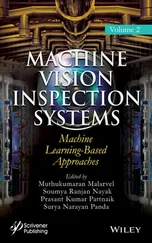Todos los derechos reservados. Esta obra no puede ser reproducida sin el permiso previo escrito de la Editorial.
Author
Jeisson Cárdenas Rubio is a labour economist who works at the Institute for Employment Research in the United Kingdom. He has worked as a consultant for the World Bank, the Inter-American Development Bank, the National Administrative Department of Statistics, the Ministry of Labour in Colombia, among other institutions. He has a PhD in Employment Research from the University of Warwick. His research has focused on measuring the possible effects of Coronavirus in the Colombian labour market, analysing housing prices in Colombia with internet data, investigating diesel market integration in France, and discussing the issue of labour demand analysis in Colombia.
Contents

List of Figures
List of Tables
Acronyms and Abbreviations
1. Introduction
2. The Labour Market and Skill Mismatches
2.1. Introduction
2.2. Basic definitions
2.2.1. Labour supply
2.2.2. Labour demand
2.2.3. Informal economy
2.2.4. Skills
2.3. How the labour market works under perfect competition
2.3.1. Labour demand
2.3.2. Labour supply
2.3.3. Market equilibrium
2.4. Market imperfections and segmentation
2.4.1. Segmentation
2.4.2. Imperfect market information
2.5. Conclusion
3. The Colombian Context
3.1. Introduction
3.2. The characteristics of the Colombian labour market
3.2.1. Labour supply
3.2.2. Labour demand
3.3. Skill mismatches in Colombia
3.4. An international example of skill mismatch measures
3.5. Lack of accurate information to develop well-orientated public policies
3.6. Conclusion
4. The Information Problem: Big Data as a Solution for Labour Market Analysis
4.1. Introduction
4.2. A definition of Big Data
4.3. Big Data on the labour market
4.3.1. Labour supply
4.3.2. Labour demand
4.4. Potential uses of information from job portals to tackle skill shortages
4.4.1. Estimating vacancy levels
4.4.2. Identifying skills and other job requirements
4.4.3. Recognising new occupations or skills
4.4.4. Updating occupation classifications
4.5. Big Data limitations and caveats
4.5.1. Data quality
4.5.2. Job postings are not necessarily real jobs
4.5.3. Data representativeness
4.5.4. Limited internet penetration rates
4.5.5. Data privacy
4.6. Big Data in the Colombian context
4.7. Conclusion
5. Methodology
5.1. Introduction
5.2. Measurement of the labour demand: Job vacancies
5.3. Selecting the most important vacancy websites in the country
5.4. Web scraping
5.5. The organisation and homogenisation of information
5.5.1. Education, experience, localisation, among other job characteristics
5.5.2. Wages
5.5.3. Company classification
5.6. Conclusion
6. Extracting More Value from Job Vacancy Information (Methodology Part 2)
6.1. Introduction
6.2. Identifying skills
6.3. Identifying new or specific skills
6.4. Classifying vacancies into occupations
6.4.1. Manual coding
6.4.2. Cleaning
6.4.3. Cascot
6.4.4. Revisiting manual coding (again)
6.4.5. Adaptation of Cascot according to Colombian occupational titles
6.4.6. The English version of Cascot
6.4.7. Machine learning
6.5. Deduplication
6.6. Imputing missing values
6.6.1. Imputing educational requirements
6.6.2. Imputing the wage variable
6.7. Vacancy data structure
6.8. Conclusion
7. Descriptive Analysis of the Vacancy Database
7.1. Introduction
7.2. Vacancy database composition
7.3. Geographical distribution of vacancies and number of jobs
7.4. Labour demand for skills
7.4.1. Educational requirements
7.4.2. Occupational structure
7.4.3. New or specific job titles
7.4.4. The most in-demand skills (ESCO classifications)
7.4.5. New or specific skills demanded in the Colombian labour market
7.4.6. Experience requirements
7.5. Demand by sector
7.6. Trends in the labour demand
7.7. Wages
7.8. Other characteristics of the vacancy database
7.9. Conclusion
8. Internal and External Validity of the Vacancy Database
8.1. Introduction
8.2. Internal validity
8.2.1. Wage distribution by groups
8.2.2. Vacancy distribution by groups
8.3. External validity
8.3.1. Data representativeness: Vacancy versus household survey information
8.3.2. Time series comparison
8.4. Conclusion
9. Possible Uses of Labour Demand and Supply Information to Reduce Skill Mismatches
9.1. Introduction
9.2. Labour market description
9.2.1. Colombian labour force distribution by occupational groups
9.2.2. Unemployment and informality rates
9.2.3. Trends in the labour market
9.3. Measuring possible skill mismatches (macro-indicators)
9.3.1. Beveridge curve (indicators of imbalance)
9.3.2. Volume-based indicators: Employment, unemployment, and vacancy growth
9.3.3. Price-based indicators: Wages
9.3.4. Thresholds
9.3.5. Skill shortages in the Colombian labour market
9.4. Detailed information about occupations and skill matching
9.4.1. Skills
9.4.2. Skill trends
9.5. Conclusions
10. Conclusions and Implications
10.1. Introduction
10.2. Conceptual contributions
10.3. Contributions to methodology
10.4. Empirical contributions
10.5. Implications for practice and policy
10.5.1. For national statistics offices
10.5.2. For policymakers
10.5.3. For education and training providers
10.5.4. For career advisers
10.6. Limitations
10.7. Further research
10.7.1. Improving machine learning and text mining algorithms
10.7.2. New job titles and potential new occupations
10.7.3. International comparison
10.8. Conclusions
References
Appendix
Appendix A: Examples of Job Portal Structures
Appendix B: Text Mining
Appendix C: Detailed Process Description for the Classification of Companies
C.1. Manual coding
C.2. Word-based matching methods (“Fuzzy merge”)
C.3. A return to manual coding
Appendix D: Machine Learning Algorithms
Appendix E: Support Vector Machine (SVM)
Appendix F: SVM Using Job Titles
Appendix G: Nearest Neighbour Algorithm Using Job Titles
Appendix H: Additional Tables
List of Figures

Figure 2.1. Labour market structure
Figure 2.2. Composition of informal economy
Figure 2.3. Labour market equilibrium under perfect competition
Figure 2.4. Labour market segmentation
Figure 3.1. Labour structure in Colombia
Figure 3.2. Participation, employment, unemployment, and informality rate trends, 2001-2018
Figure 4.1. IP traffic by source, 2016-2021
Figure 5.1. Job advertisement comparison between job portals
Figure 6.1. Steps for extracting more value from job vacancy information
Figure 6.2. Word cloud: Frequency analysis
Figure 6.3. Word association: Frequency analysis
Figure 6.4. Summary of steps carried out to obtain the Colombian vacancy database
Figure 7.1. Distribution of job placements by departments, 2016-2018
Читать дальше













